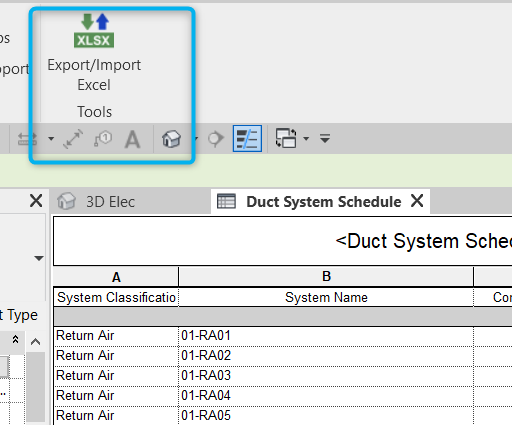Enhance Your Process with Powerful Revit Add Ins
Wiki Article
Revit Accelerator: Excel Integration Approaches for Enhancing Efficiency and Collaboration
In this article, we will certainly discover the benefits of incorporating Excel into your Revit process. And also, we will share best techniques for seamlessly incorporating Excel into your Revit tasks. Get all set to supercharge your Revit experience with our Revit Accelerator: Excel Assimilation Approaches!Benefits of Excel Assimilation in Revit
The advantages of Excel combination in Revit are various and can substantially boost performance and partnership. By perfectly attaching these two powerful devices, you can improve your operations and save important time. With Excel assimilation, you can easily import and export information between Revit and Excel, permitting you to leverage the toughness of both programs.
One more advantage of Excel integration is the capability to develop vibrant schedules and reports. By linking your Revit design to an Excel spread sheet, any type of modifications made in Revit will automatically update in the equivalent Excel file. This makes it very easy to generate current schedules, amount takeoffs, and other task documents.
Excel combination in Revit additionally enables better collaboration among team participants. With the ability to import and export information, you can conveniently share details with coworkers that might not have accessibility to Revit. This advertises effective interaction and permits far better sychronisation and decision-making.
Enhancing Workflows With Revit and Excel
Enhancing process with Revit and Excel can substantially boost effectiveness and partnership. By combining the capacities of Revit and Excel, you can seamlessly transfer information between the 2 applications, getting rid of the need for hand-operated data entrance and reducing the risk of mistakes.
Using Revit and Excel together permits you to utilize the toughness of each program - revit tool. You can export data from Revit into Excel, where you can execute complex computations, produce charts and graphs, and evaluate the info in a much more orderly and efficient fashion. On the various other hand, you can import data from Excel into Revit, enabling you to rapidly update your versions and paperwork based on modifications made in Excel
The combination of Revit and Excel likewise advertises cooperation among team participants. By sharing Excel documents, you can conveniently connect and team up on layout and construction-related information. This boosts coordination and guarantees that every person is dealing with the most updated information.
Making Best Use Of Partnership With Excel and Revit
To make best use of collaboration with Excel and Revit, you can effortlessly update and share style and construction-related data with your group. With just a couple of clicks, you can import Excel spread sheets into your Revit design, enabling you to easily gain access to and manipulate the data.Among the vital advantages of using Excel in conjunction with Revit is the capability to upgrade information in both programs concurrently. Any kind of adjustments made in Excel will automatically next be shown in Revit, and the other way around. This makes certain that everyone is dealing with the most updated info, preventing complication and saving beneficial time.
In addition, Excel offers powerful tools for assessing and organizing information, which can greatly enhance your collaboration efforts. You can develop customized reports and charts in Excel, helping you to visualize and communicate important project information efficiently. When offering information to stakeholders or making informed choices based on job metrics (revit add ins)., this can be particularly helpful.
Advanced Methods for Improving Efficiency in Revit Using Excel
By making use of sophisticated strategies in Revit, you can substantially raise your performance by leveraging the power of Excel. With Revit's Excel integration attribute, you can link Excel spread sheets straight to your Revit design, permitting you to quickly manage and update information.
Additionally, you can utilize explanation Excel macros to automate repeated jobs in Revit (revit tool). Macros allow you to tape-record a collection of activities and play them back with a single click, saving you time and initiative. You can develop a macro to instantly generate space schedules or update criterion worths in bulk.
Ideal Practices for Excel Integration in Revit
Utilizing Excel as a data management device in Revit enables for reliable monitoring and updating of data. One of the best techniques for Excel combination in Revit is to create a clear and arranged data framework. By complying with these finest practices, you can efficiently make use of Excel as a data management device in Revit and increase your performance and collaboration.Verdict
In final thought, integrating Excel with Revit can greatly boost productivity and cooperation in the design process. By taking full advantage of and improving workflows partnership, click for info teams can work much more successfully and successfully. Advanced techniques, such as making use of Excel macros and solutions, can better enhance efficiency in Revit. Nonetheless, it is essential to adhere to best methods to make certain seamless integration and prevent any kind of potential problems. By leveraging the power of Excel, Revit individuals can accomplish greater degrees of efficiency and cooperation in their jobs.With Excel combination, you can quickly import and export information between Revit and Excel, enabling you to take advantage of the staminas of both programs.
One of the essential benefits of Excel integration is the capability to use Excel solutions and features within Revit. By linking your Revit design to an Excel spread sheet, any type of modifications made in Revit will immediately update in the corresponding Excel file. On the other hand, you can import data from Excel into Revit, enabling you to quickly upgrade your versions and documentation based on modifications made in Excel.
With Revit's Excel integration feature, you can connect Excel spread sheets straight to your Revit design, enabling you to quickly handle and update data.
Report this wiki page